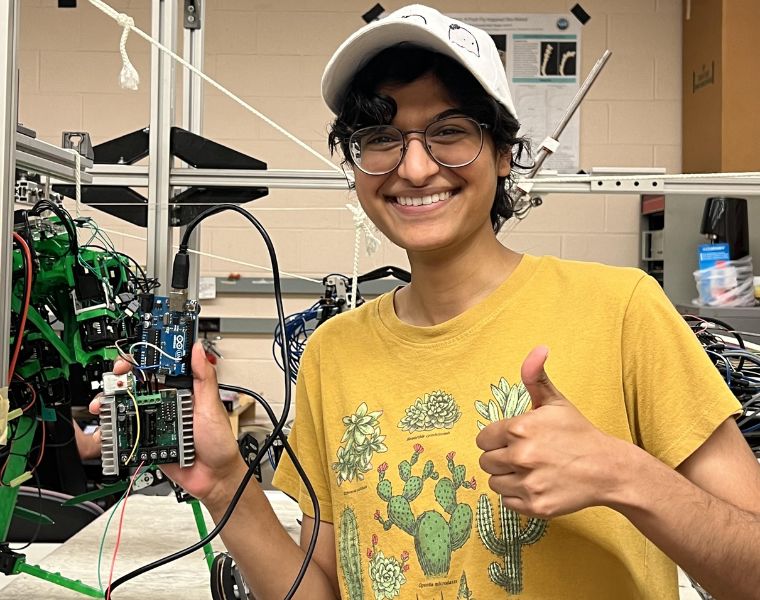How can we gain insights about places humans can’t easily reach, such as the deep sea or outer space? If you ask undergraduate student Rucha Batchu, the answer is simple: Robots.
This summer in the Center for Biologically Inspired Robotics Research—led by Roger D. Quinn, the Arthur P. Armington Professor of Mechanical Engineering—Batchu is working to help the research team develop devices that are able to traverse these terrains.
She’s contributing to that mission by working on a critical component of the lab’s work: developing a new treadmill that will allow the lab to test cat and rat robots for accurate movements.
With the support of Quinn and Will Nourse, a PhD candidate in electrical engineering, Batchu has been tasked with creating a split-belt treadmill capable of running two speeds and directions simultaneously. She plans to have compiled a list of materials and developed a full computer-aided design by the time the fall semester begins.
A rising senior majoring in mechanical engineering, Batchu was afforded the opportunity to work in the lab this summer through the Undergraduate Research Office’s Science, Technology, Engineering and Mathematics program funding.
Learn more about Batchu’s work this summer and her thoughts on her experience at CWRU.
1. What interested you in coming to CWRU?
First off, the academics and interdisciplinary approach to things—I’m glad I’m able to take classes outside my major! Second, I really liked the community around Case [Western Reserve], especially [Sears] think[box] and the Little Italy area. Lastly, the weather—I come from a four-season place (Eden Prairie, Minnesota) and I’d like to stay in a four-season place.
2. Why did you decide to stay on campus to conduct research this summer?
I had an internship last summer and I wanted to try something new/different. I’m in the BS/MS program, so I also figured this would be a good introduction to full-time research and a way to figure out my master’s project.
3. Have you had any “aha” moments with this project?
I hadn’t worked with motors before, so I wasn’t aware of how difficult it could be to find one with the exact specifications I wanted. After 2 1/2 days of looking at motors for eight hours straight, I had a moment and realized that if I brought gears into the picture, a lot of options opened up!
4. What is the most valuable thing you’ve learned as a researcher so far?
Patience. Research generally goes slower than what you expect. Also time management—since there aren’t any real deadlines—becomes really important. Also, how nice it is to have a flexible schedule.
5. What is it like working with Dr. Quinn?
Dr. Quinn is a really knowledgeable person with a very down-to-earth attitude. He’s great to talk to because he always has a unique perspective.

